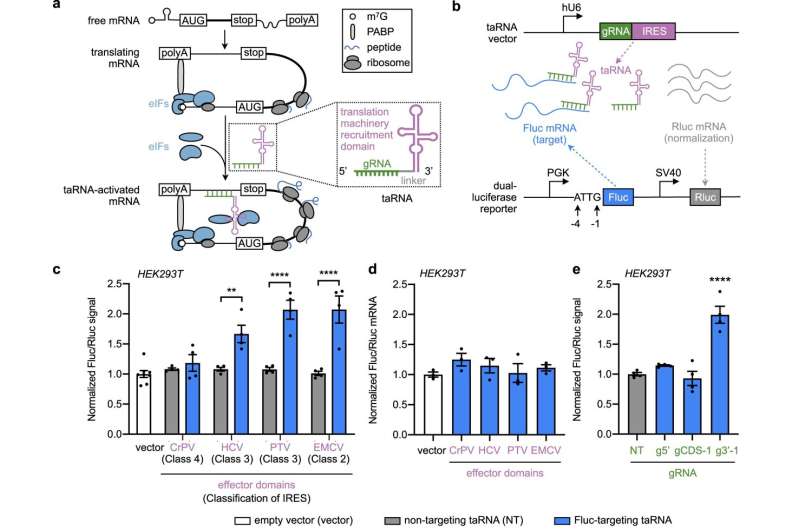Novel approaches for correcting gene expression insufficiency
Originally published by Olivia Dimmer, Northwestern University, on November 17, 2023
taRNAs built from an array of IRESs increase reporter gene translation. Credit: Nature Communications (2023). DOI: 10.1038/s41467-023-42252-z
A new molecular technology capable of binding to mRNA and regulating gene expression may offer a new avenue for treating diseases caused by haploinsufficiency, or the absence of one functional gene copy, according to a study published in Nature Communications.
Messenger RNA, or mRNA, contains instructions for DNA to produce proteins. Many diseases, including cancer and many genetic disorders, result from insufficient gene—and therefore protein—expression, but few strategies exist to correct that kind of dysregulation at a molecular level.
The new technology, dubbed "translation-activating RNAs" (taRNAs), consists of small molecules programmed to attach to specific mRNA molecules to directly control their translation into proteins, said Alfred L. George Jr., MD, the chair and Alfred Newton Richards Professor of Pharmacology and a co-author of the study.


Comments
Post a Comment